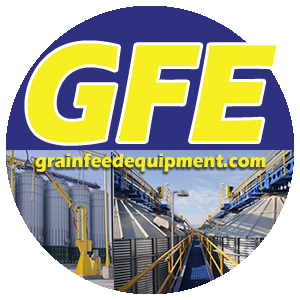By CARL SWISHER
Sales Manager-Elevator Buckets
4B Components Ltd. | Morton, IL
309-698-5611 | go4b.com
The design of “bottomless” elevator buckets is both unique and counter intuitive.
However, there are three primary reasons for using “bottomless” elevator buckets.
- To absolutely maximize bucket elevator system capacity.
- To help reduce sticky materials from collecting in the buckets.
- For efficiently elevating dusty materials that require extreme venting.
Series of Open Bottomless Buckets
This type of elevator bucket system consists of a series of open buckets without a bottom followed by a closed bucket with a bottom.
The buckets are placed on very close vertical spacing so that the bottom of the top bucket rides just above the top of the bucket beneath it.
When material is loaded into the series of buckets, it flows into a continuous column so that the carrying space between the buckets is completely filled.
The material from the first bottomless bucket rests on top of the material in the bucket below but does not displace it.
Tension is created both by the sloped sides of the buckets and the relatively small opening in the bottom of the bucket.
The material footprint holds the mound beneath it in place without disrupting the materials angle of repose. As the buckets rotate around the head or tail pulley, they “fan out” to increase the space necessary for proper discharge and filling.
The momentum of centrifugal force does the rest.
The employment of this system can boost overall elevator capacity by almost two-fold over traditional elevator bucket configurations.
Eliminates Issues With Sticky Materials
The bottomless bucket system also eliminates many of the headaches associated with sticky materials and fluffy products such as flakes and powders.
With sticky materials, such as animal feeds laden with molasses or animal fats, there is no place for the buckets to clog as they are self-cleaning.
Only the bucket with the bottom is prone to collecting the sticky material and capacities can be adjusted to compensate for this. For fluffy products, the bottomless design offers ultimate ventilation.
Flakes and powders meet no resistance from the air pocket or vacuum release associated with traditional elevator buckets.
Either for a new bucket elevator or as an enhancement to an existing system, the unique features of the bottomless bucket design can deliver the absolute maximum capacity possible.
They are also a solution to the many frustrations associated with elevating sticky or fluffy materials.



